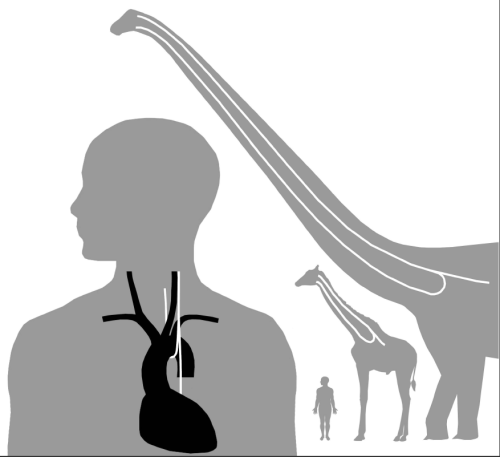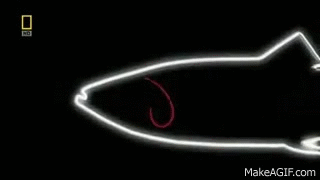
Source
So in the first part of this series, we took a look at convergent evolution - the process by which two or more separate species develop the same traits despite being geographically separated and isolated for millions of years.
This is, in itself, a demonstration of how brilliant evolution can be; eyes are so complex and specifically formed, yet they developed on SEVEN separate occasions.
Only birds have wings… EXCEPT BATS
Only reptiles have scal – PANGOLIN

Source
Sometimes, a great idea is worth hanging on to, and mother nature knows that. But mother nature can also be quite moronic at times, and that’s where we start off; stupid design.
Stupid Design
People naturally look at animals and see the success of billions of years… ok, most smart people. And they’d be right. They’re alive today, or had survived for millions of years, because they evolved in a way that was perfectly adapted to their environment. When that environment changes too rapidly, well, that’s when things typically die off.
But there are some things that don’t seem like ‘adaptations’ at all, but managed to sneak through the evolutionary cracks and survive in animals even to this day.
Giraffe
Perhaps most famously, Richard Dawkins set out to hammer this point home through a dead giraffe.

What he demonstrates is that, given a slow enough process, badly designed elements of an animal can get through without substantial consequence.
In the example of the giraffe (For those of you who cannot watch the video), there is a nerve called the recurrent laryngeal nerve which goes from the brain to the larynx, but rather than taking a direct route of about 2 inches, it takes a huge detour straight down to the heart, U-turning back up and into the larynx, for a journey totaling 4.6 metres!
This inefficient process is a historical legacy going all the way back to fish, in the pre-neck ages. As necks got longer, the nerve subtly got stretched out with no real consequence. You can even see less extreme results in us humans and other animals – even dinosaurs:


Source
There’s no better place to say, if it ain’t broke, don’t fix it!
But sometimes, it IS broken, and life has just has to deal with it
Giraffe 2
Also, ever wonder what it feels like to be born, only to be welcomed with a 5-foot plummet to the ground? Welcome to the life of a baby giraffe. These guys have to sort themselves out, seriously.
Human Stomachs
You know, our stomachs can’t digest the main component in plant matter – Cellulose. Typically, it’s bacteria that does all the breaking down, and cows, for example, have no problem with this. But we don’t have that bacteria at all.
Sea mammals
You’d think, given they spend 100% of their time in the water, they’d learn how to extract air through some kind of… I duno, gill system. This is what convergent evolution was invented for! But no, moving the nose to the top of the head and massively increasing lung capacity should be a sufficient workaround.

It really looks like a nose when you see it close up…
Source
Human feet
26...That’s how many bones in the human foot. 26 moving parts for a rigid body part. Of course, this is another historical legacy from when our apey ancestors needed flexible feet to swing around and and grab stuff, but now, those 26 bones gift us with:
‘ankle sprains, plantar fasciitis, Achilles tendonitis, shin splints, and broken ankles’ - Jeremy DeSilva of Boston University

Ridiculous
Source
The eye
As imperfect as they are perfect. As Claire Ainsworth and Michael Le Page in New Scientist Put it:
’Their light-sensing structure, the retina, is wired up back-to-front, with the light-sensitive cells behind the nerves and blood vessels that support it. Not only does light have to pass through this layer first, obscuring the image, but the nerves and blood vessels have to dive through the retina, creating a blind spot in each eye.’
Looking back at Part 1 of this series, I showed how the Octopus evolved eyes separately from us, but in the exact same way. They see like we do and the same genes were involved in its development.
However, they got it right. They didn’t have the same evolutionary path as us vertebrates.

Spot the difference
Source
New Scientist continues:
‘when eyes first evolved in the ancestors of modern vertebrates, the retina arose from an in folding of the developing brain, and the cells that could form light receptors happened to end up on the inside of this fold.’
Having said that, new research supposes a decent reason why.
There’s a whole range of issues with the delicacy and disease-prone eye of a human, but we ain’t got time for that.
All of these are problematic and annoying, but we can just put up and shut up, right? Well… not always.
Fatal Design
If I ask you, you’ll probably start thinking about babies and birth. Correct! What a terrible design. Being bipedal has had a lot of advantages for us, and having a big brain has also had a lot of advantages. But put them together and what’s the solution?
Birth Canal
A narrow birth canal that can actually squeeze and potentially crush a baby’s skull, making it otherwise impossible to birth naturally. Without modern surgery, people just had to deal with it via death.

Source
Pharynx
The pharynx shouldn’t even exist at all. This is the passage that allows food to pass through. It’s also the passage that allows AIR to pass through. How efficient, putting them both together! Sure, it dramatically increases the chances of choking, something we all do at least a few times in any given lifetime, but hey!

Source
Oxygen
Speaking of breathing, how is it that we haven’t actually figured out how to do it?
The human breathing reflex happens due to the detection of carbon dioxide. Think about it. Our breathing reflex is NOT something that comes about directly from the absence of oxygen, the stuff that makes us not die. This indirect way of doing things means that in higher altitudes, humans basically suffocate without even noticing due to the lack of oxygen in the thinned air. Since there is not an abundance of carbon dioxide either, the human body can’t regulate its own breathing.
Wisdom Teeth
If you only have one argument against God, this is the one.
Not only are wisdom teeth vestigial – totally useless – but they are downright painful, and before medicine, ensuing infections could often lead to death. All for a couple of teeth you don’t even need.

Source
Hyena Clitoris
Prepare your imaginations. During Hyena pregnancy, the mother provides a high level of hormones to strengthen the babies within. Unfortunately, these androgens damage ovaries and make it difficult for those children to conceive when they grow up.
What’s worse, is that the clitoris, which also serves as the birth canal in Hyenas, grows up to 7 inches, protruding like a penis from her body.

Source
"Imagine giving birth through a penis," said study co-author Kay Holekamp of Michigan State University
Errr, no thanks.
The consequence of this is that the tiny shaft – barely an inch in diameter – is ripped apart during birth, providing hyenas with a particularly high death rate in pregnant mothers.
The brain

The mother of all f**k ups. I mean, it’s wonderful and all, but there’s a phenomenal amount of inbuilt imperfections that are simply inexcusable. Wisdom teeth, for example. You can blame big brains for those.
Mental conditions are so rife in the human brain that we need a giant, 947 page book, the DSM-5 just to remember them all.
Many of these ‘disorders’ which lead us to shortened lives, suicides, homicides and more were actually evolutionarily advantageous back in the day, but our rapid change in lifestyle and culture made them a hindrance.
Bi-polar disorder, for example, is considered a mental tool that would have had a couple of advantages. First, mood swings would align with seasons and light, in the same kind of way bears hibernate or other creatures change their persona rapidly.
Second, bipolar disorder in women could have been advantageous for procreation, being more ‘manic when it’s summer time and convenient to get busy. This is backed up by the fact that bi-polar disorder is most prevalent in women of reproductive age.
Others include:
• OCD, which served as a psychological immune system
• ADHD was a great tool of innovation
• Dyslexia was a side-effect of a creative, problem-solving mind (only made a hindrance since the invention of writing)
• Austism, which served as a kind of survival superpower back in the hunter-gatherer days, working solo rather than in social groups.
• Stress, another wonderful survival skill now used to make us sick and die more easily.
